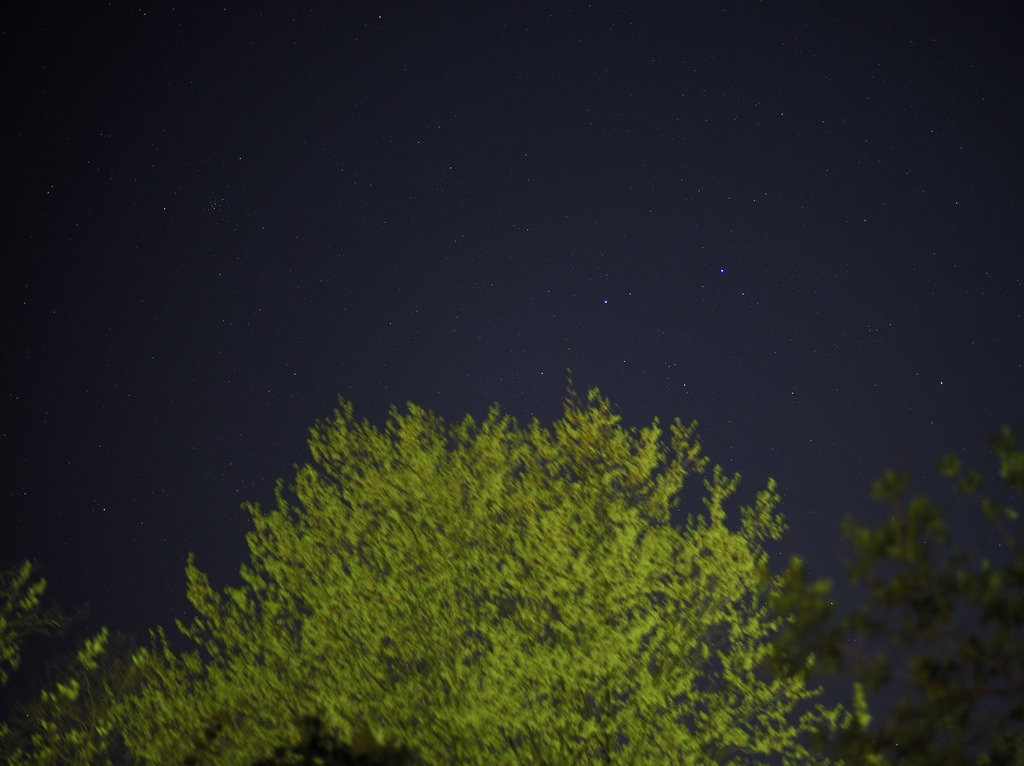Today – or, rather, yesterday (because it’s way past midnight as I write this) – I played around with Deep Sky Stacker a bit. That’s a free software which helps reducing noise and also with taming our atmosphere when photographing the night sky.
So I’ve made a stack from 11 images out of my Olympus camera, each shot with 1 second exposure at ISO 1600 with the aperture of the Panasonic Leica lens fully open at f/1.4. In Windows 10 the program always stopped with the remark that I hadn’t enough memory, tho I was running it on bare metal with 16GB available. So I had to revert to a virtual Windows 7 machine with much less memory (and only 2 of the 4 processor cores), but that worked.
Didn’t care for the trees in the foreground, they would be blurry anyway (open aperture and a bit wind), so this is how the stack looks:
Castor, Pollux, and about 2,000 other visible stars, Mörfelden-Walldorf 2016
After fighting with the software to give me this result, I went out again for another smoke, and saw Jupiter. Ok – too late to get out the telescope (these things have to cool down for at least half an hour before you can actually start using them), so with the same 25mm standard lens (50mm-equivalent on film), I made a photo of our neighbour planet standing right above the neighbour house:
Jupiter, Mörfelden-Walldorf 2016
I could get out the scope later today, tho a short 750mm Newtonian isn’t the exactly right one for planets – for these you need magnification, which means more focal length. But ok, with my “crop” sensor this is again equivalent to 1500mm on film (or what they now call “full frame” cameras), so let’s see what I can get. If we have good weather again of course…
Ok; it’s 4 degrees (C), and 3 o’clock. Nighty night…
Thanks for reading.
P.S: if you want to see some more stars, here you go. Taken October last year on the back of the largest telescope of our local observatory (Volkssternwarte Darmstadt):
Riding piggyback on the observatory’s largest telescope to see the stars…
This is also an image stack, but it was done in-camera while it took about 50 exposures of 1 minute each.
My own telescope here at home isn’t motorized yet, so the best I could get until now with the camera actually “looking through” it was a 21-image stack of the moon:
Moon, stacked from 21 images
I did this on November 25th of last year, and I’m still waiting to repeat it to get more detail.
Thanks again for reading, and for viewing.





